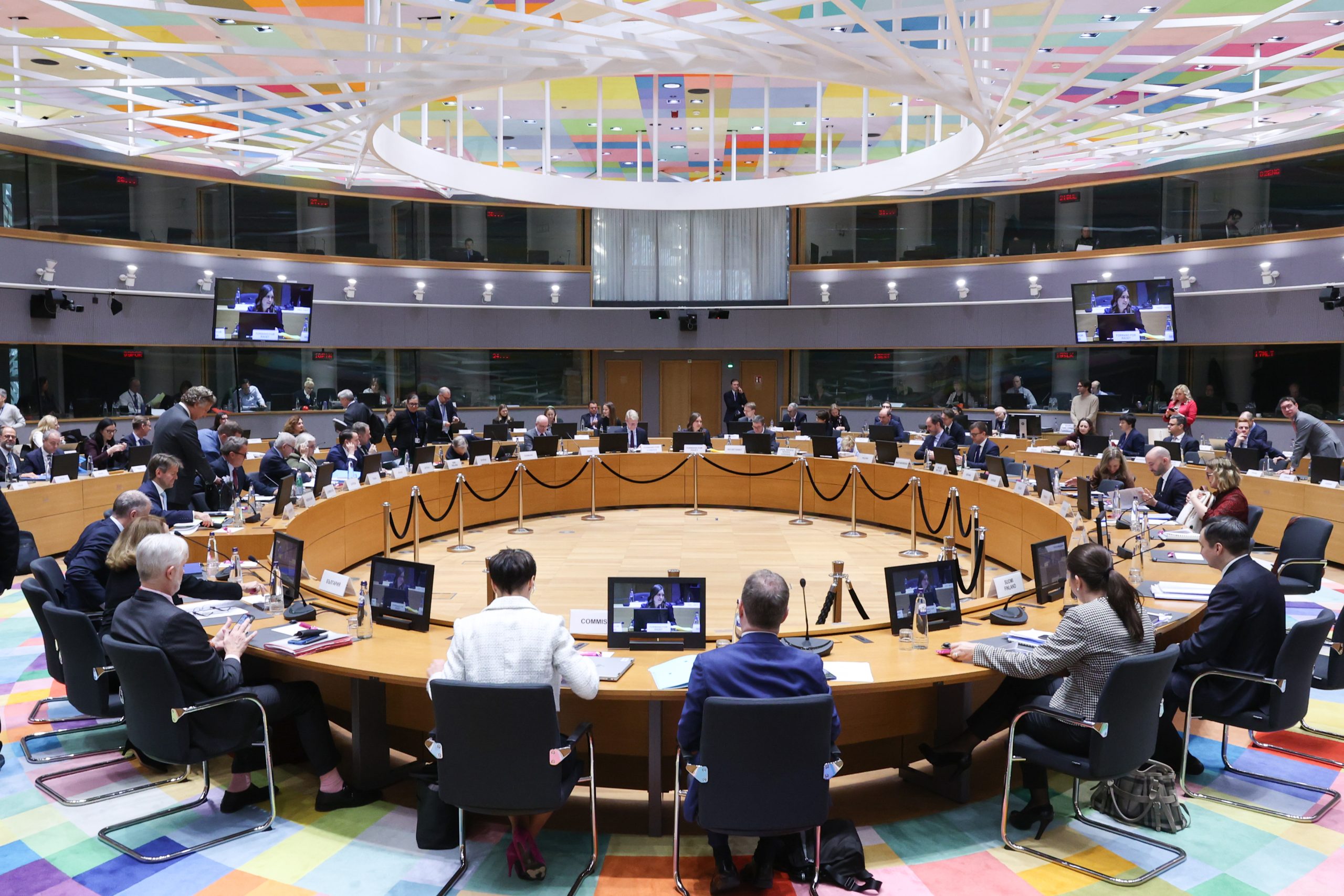A string of economic shocks presents an additional obstacle for European businesses and policymakers, at the critical point in the continent’s transition to a greener and more digital economy. After 20 years of moderate economic growth, Europe needs to catch up with other global players, by advancing with smart technologies and the digitalisation of businesses and industry.
The current context is creating a challenging environment for macroeconomic policy in Europe. Following a period of substantial spending during the pandemic and a surge in inflation, monetary policy entered a phase of dramatic tightening. High uncertainty and a deteriorating economic outlook could depress investment. This might delay critical investments in energy, digitalisation and innovation, which are the main facilitators of sustainable and competitive growth.
Europe is closing the digital gap, albeit slowly
While EU firms are rapidly gaining on their US peers in the use of advanced digital technologies, the continent is still trailing in digital innovation, and remains dependent on critical technologies from third countries. Over half of EU firms responded to the pandemic by investing in digitalisation, according to the EIB Investment Report. However, this is still well below US levels: In the European Union the number of employees who work for a firm that has yet to adopt advanced digital technologies or invest in digitalisation is still around one in three, compared to one in five in the United States.
Thus, despite the burst of digitalisation triggered by COVID-19, the EU economy’s digital transformation still requires the adoption of more advanced digital technologies: things like 3-D printing, advanced robotics, the internet of things, big data analytics and artificial intelligence, drones, online platforms or augmented reality.
To illustrate, only 14% of companies carried out data analytics in 2020, while the EU Path to the Digital Decade calls for over 75% of EU companies to adopt big data by 2030. European policymakers continue to stress the importance of digitalisation, lest EU firms fall into a dependency trap for rare and strategic technologies.
On the positive side, the share of EU firms implementing advanced digital technologies did increase from 2021 to 2022 — reaching 69%, compared with 71% in the United States. Yet if one considers firm size, a mere 30% of microenterprises took steps to improve digitalisation in 2022 (compared with 63% of large firms).
A winner-take-all dynamic
Digitalisation also varies widely among sectors. For example, 83% of firms in the machinery and transport equipment sector use advanced digital technologies — far more than in construction (52%). The digitalisation trend is particularly strong in the chemicals and pharmaceuticals sector and in utilities (electricity, gas and water companies), but also in digital sectors like computer and electronics, machinery and transport equipment, and IT and telecommunications. While the stronger digital adoption in these sectors has enabled them to advance their businesses, non-digital companies are lagging even further behind.
Differences in digital adoption persist when it comes to exports as well. The rise of the internet and digital technologies have improved trade-related information flows and reduced communication costs. Exporters and importers are more likely to adopt advanced digital technologies than non-trading firms. One-third of non-trading firms invested in increasing digitalisation during the pandemic, compared with 40% of exporters and importers and more than half of two-way traders.
Corporate digitalisation practices also depend on adequate digital infrastructure and competition-friendly regulation, and on the inclination of management to invest in human capital. To optimally engineer and navigate these factors, a coordinated policy framework is crucial.
This is evident when it comes to revamping staff training systems in particular. Labour productivity is closely linked with the use of advanced digital technologies; therefore, policy should not just seek to adopt them, but should also ensure the training needed to unlock their full potential. This can prove especially important, for example, in sectors where new hardware technologies are often hailed as substitutes for human labour.
Digital transformation in the Western Balkans
According to the latest EIB Enterprise Survey for the region, firms that were well integrated in global value chains, as well as those that had been more innovative and digitalised in the past, were better able to adapt during the pandemic. They expanded their online presence, switched to remote work and adjusted production. Opening up the global economy has been key to enabling countries in the Western Balkans to increase their comparative advantages and competitiveness. Digitalisation is an important part of this process, as it enables higher productivity and human capital development.
As one of the main contributors to the path towards digital transformation in the region, the EIB Group has provided close to €200 million for digital projects since 2020. This has helped companies digitalise, and has improved the capacity, coverage and quality of 4G and the rollout of 5G mobile services. Loans from EIB Global have also supported the digitalisation of over 1 500 schools and given teachers and pupils access to digital skills. Broadband will also be deployed to remote areas with the aim of closing the urban-rural digital divide and creating equal learning and job opportunities for rural residents.
Turning challenges into opportunities for change
To help the region reap the benefits of a digital economy, the European Union launched the Digital Agenda for the Western Balkans in 2018. A recent evaluation of the agenda’s progress conducted in 2022 indicates that, although the Western Balkans has a high internet penetration rate ranging between 75% and 96%, digital literacy remains low among the general population — but also in administrative government. Digital public services have yet to reach their full potential, and the region is still struggling to address the pressing issue of cybersecurity. In this regard, adopting targeted strategies to promote digital skills is certainly the right way forward.
To support businesses, a new EU guarantee facility for the Western Balkans has been created to help finance the green and digital transition of SMEs, local municipalities and public infrastructure. To achieve leverage from private sector investments, the facility makes increased EU financing for businesses available in the form of grants, through blending and with substantial allocations for guarantees.
Thanks to these innovative financing tools paired with traditional grants, this EU support is expected to mobilise investments of up to €20 billion in the course of the decade, as part of the overall Economic and Investment Plan for the Western Balkans.
When it comes to digitalising sectors and regions across Europe, there is a long road ahead. But with the right policy support, human development targets and financial instruments, it is clearly possible to foster an enabling environment for the improvement of digital infrastructure, skills and processes.









